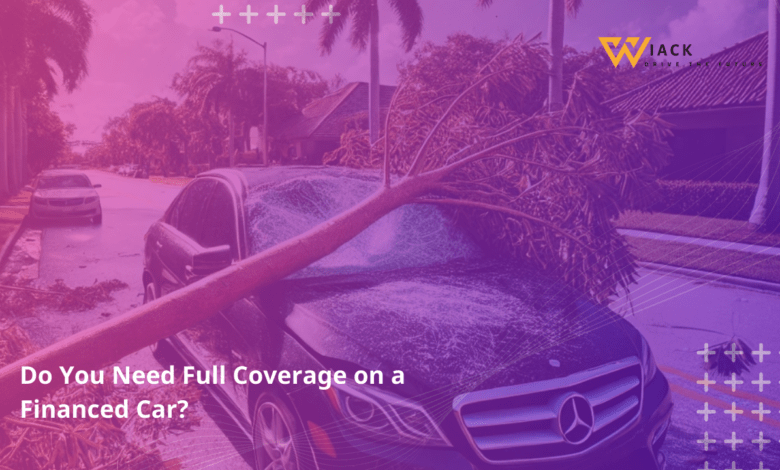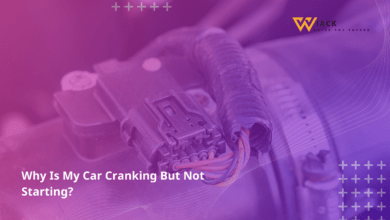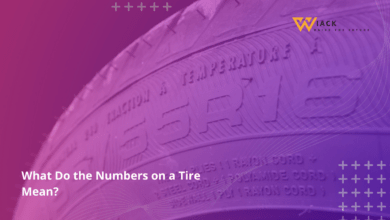Do You Need Full Coverage on a Financed Car?

Did you know that over 85% of new car purchases in the United States are financed? This staggering statistic highlights the importance of understanding the insurance requirements for financed vehicles. If you’re one of the millions of Americans with a car loan, you’ve likely encountered the term “full coverage” when discussing auto insurance. But what exactly does this mean, and is it really necessary? Let’s dive into the world of car insurance for financed vehicles and uncover the facts you need to know.
Understanding Full Coverage
When you hear the term “full coverage,” it might sound like a catch-all insurance policy that protects you from every possible scenario. However, the reality is a bit more nuanced. Let’s break down what full coverage actually means and what it includes.
What is Full Coverage?
Full coverage is not actually a specific type of insurance policy. Instead, it’s a term used to describe a combination of different coverage types that provide comprehensive protection for your vehicle. Typically, when lenders or insurance agents talk about full coverage, they’re referring to a policy that includes both liability insurance and physical damage coverage.
The concept of full coverage arose from the need to protect both the driver and the lender’s investment in the vehicle. Since a financed car is essentially collateral for the loan, lenders want to ensure that their investment is protected in case of an accident or other damage to the vehicle.
What Does Full Coverage Include?
A full coverage policy generally includes the following types of insurance:
- Liability coverage: This is the foundation of any auto insurance policy and is required by law in most states. It covers damages or injuries you cause to others in an accident.
- Collision coverage: This pays for damage to your own vehicle if you’re involved in an accident with another car or object, regardless of who is at fault.
- Comprehensive coverage: Also known as “other than collision” coverage, this protects your car from non-collision related incidents such as theft, vandalism, natural disasters, or hitting an animal.
Let’s break down these coverages in more detail:
| Coverage Type | What It Covers | Typically Required? |
|---|---|---|
| Liability | Bodily injury and property damage you cause to others | Yes, by law in most states |
| Collision | Damage to your car from accidents with other vehicles or objects | Yes, by most lenders |
| Comprehensive | Damage to your car from non-collision events (theft, weather, etc.) | Yes, by most lenders |
It’s important to note that while these are the core components of full coverage, some policies may include additional protections such as:
- Uninsured/underinsured motorist coverage: Protects you if you’re in an accident with a driver who has insufficient or no insurance.
- Personal injury protection (PIP): Covers medical expenses for you and your passengers, regardless of fault.
- Rental car coverage: Provides a rental car while your vehicle is being repaired after a covered accident.
What is Not Included in Full Coverage?
While full coverage provides extensive protection, it’s not all-encompassing. Some things that are typically not included in a standard full coverage policy are:
- Gap insurance: This covers the difference between what you owe on your car loan and the car’s actual cash value if it’s totaled.
- Roadside assistance: Services like towing, jump-starts, or tire changes are often separate add-ons.
- Custom equipment coverage: Aftermarket modifications or high-end audio systems usually require additional coverage.
- New car replacement: This option pays for a brand-new car if yours is totaled, rather than the depreciated value.
Understanding these exclusions is crucial when deciding on your insurance coverage. You may want to consider adding some of these options depending on your specific needs and circumstances.
Why Full Coverage is Important for Financed Cars
Now that we’ve clarified what full coverage entails, let’s explore why it’s particularly important for financed vehicles. There are several key reasons why lenders typically require full coverage on cars that are not yet paid off.
Protecting Your Investment
When you finance a car, you’re making a significant financial commitment. Full coverage insurance helps protect this investment in several ways:
- Accident protection: If you’re involved in an accident, collision coverage ensures that your car can be repaired or replaced, regardless of who is at fault.
- Non-accident incidents: Comprehensive coverage protects against a wide range of non-collision related damages, such as theft, vandalism, or natural disasters.
- Maintaining vehicle value: By promptly repairing any damage, you help maintain the value of your vehicle, which is important if you plan to sell or trade it in the future.
Consider this scenario: You’ve just financed a new $30,000 car. Six months later, it’s stolen from your driveway. Without comprehensive coverage, you’d be left paying for a car you no longer have. With full coverage, your insurance would help replace the vehicle, protecting your financial investment.
Covering Loan Obligations
Lenders require full coverage because they want to ensure that their investment—your car—is protected. Here’s why:
- Loan security: Your car serves as collateral for the loan. If it’s damaged or destroyed, the lender wants to make sure they can recoup their investment.
- Continued payments: Full coverage helps ensure you can continue making loan payments even if your car is severely damaged or totaled.
- Legal protection: In the event of an accident where you’re at fault, liability coverage protects you from potentially bankrupting lawsuits.
For example, if you total your financed car and only have liability coverage, you’d still be responsible for paying off the entire loan—even though you no longer have a car to drive. Full coverage helps prevent this financial nightmare.
Avoiding Financial Burden
Full coverage can save you from significant out-of-pocket expenses in various situations:
- Accident costs: Without collision coverage, you’d be responsible for all repair costs if you cause an accident.
- Theft or vandalism: Comprehensive coverage protects you from bearing the full cost of replacing a stolen vehicle or repairing vandalism damage.
- Natural disasters: If your car is damaged in a flood, hurricane, or other natural disaster, comprehensive coverage would help cover the repair or replacement costs.
Imagine you live in an area prone to hailstorms. One day, a severe storm hits and causes $5,000 worth of damage to your financed car. With comprehensive coverage, you’d only need to pay your deductible (typically $500-$1000), rather than the full $5,000 for repairs.
By requiring full coverage, lenders are not only protecting their own interests but also helping you avoid potentially devastating financial setbacks. While the monthly premiums for full coverage may be higher than for liability-only insurance, the long-term financial protection it provides is often well worth the cost for financed vehicles.
Factors to Consider When Deciding
While full coverage is typically required for financed cars, there are several factors you should consider when deciding on the specifics of your policy. Understanding these elements can help you make an informed decision that balances protection and affordability.
Loan Terms and Conditions
The terms of your auto loan play a significant role in determining your insurance needs:
- Lender requirements: Most lenders mandate full coverage as part of the loan agreement. Review your loan documents carefully to understand the specific insurance requirements.
- Loan duration: If you have a longer loan term (e.g., 72 or 84 months), you may want to maintain full coverage for the entire period to protect your investment.
- Gap insurance: For loans where you owe more than the car is worth, consider adding gap insurance to cover the difference in case of a total loss.
For example, if your loan agreement requires $100,000 in liability coverage but your state minimum is only $50,000, you’ll need to meet the higher requirement to comply with your loan terms.
Vehicle Value and Age
The value and age of your financed vehicle should influence your coverage decisions:
- New cars: Newer vehicles typically warrant more comprehensive coverage due to their higher value and replacement cost.
- Depreciation: As your car depreciates, you may want to adjust your coverage. However, remember that repair costs don’t necessarily decrease with the car’s value.
- Replacement cost: Consider how much it would cost to replace your vehicle if it were totaled, and ensure your coverage is sufficient.
For instance, if you’re financing a brand-new luxury vehicle worth $50,000, you’ll want to maintain full coverage with high limits. On the other hand, if you’re financing an older used car worth $5,000, you might opt for lower coverage limits to reduce your premiums.
Your Driving Habits and Risk Profile
Your personal circumstances and driving habits should also factor into your coverage decisions:
- Annual mileage: If you drive frequently or have a long commute, you may be at higher risk of accidents and should consider more comprehensive coverage.
- Driving record: If you have a history of accidents or traffic violations, full coverage becomes even more important as you’re at higher risk.
- Location: Where you live and park your car can affect your risk. Urban areas may have higher rates of theft and vandalism, making comprehensive coverage more crucial.
- Climate: If you live in an area prone to natural disasters like floods or hurricanes, comprehensive coverage becomes more valuable.
Consider this scenario: You live in a city with high theft rates and park on the street. In this case, comprehensive coverage would be particularly important to protect against potential theft or vandalism.
By carefully considering these factors, you can tailor your full coverage policy to your specific needs and circumstances. While your lender may require certain minimum coverages, you have flexibility in choosing limits and deductibles that make sense for your situation.
Remember, the goal is to strike a balance between adequate protection and affordable premiums. Don’t hesitate to shop around and compare quotes from multiple insurance providers to find the best combination of coverage and price for your financed vehicle.
Alternatives to Full Coverage
While full coverage is typically required for financed cars, it’s worth understanding the alternatives. This knowledge can be useful if you’re considering paying off your loan early or if you’re shopping for a used car that you plan to finance.
Liability Coverage Only
Liability coverage is the minimum insurance required by law in most states. It covers damages or injuries you cause to others in an accident but does not protect your own vehicle.
Pros of liability-only coverage:
- Lower premiums compared to full coverage
- Meets legal requirements for driving
- May be sufficient for older, less valuable cars
Cons of liability-only coverage:
- No protection for your own vehicle in accidents you cause
- No coverage for theft, vandalism, or natural disasters
- May violate terms of your auto loan
For example, if you cause an accident that totals both your car and another driver’s, liability coverage would pay for the other driver’s car but not yours. You’d be left paying off a loan for a car you can no longer drive.
Comprehensive and Collision Coverage
Some drivers opt for a middle ground between full coverage and liability-only by choosing comprehensive and collision coverage without additional protections.
Pros of comprehensive and collision coverage:
- Protects your vehicle from both collision and non-collision incidents
- Often satisfies lender requirements
- Lower premiums than policies with additional coverages
Cons of comprehensive and collision coverage:
- May not include important protections like uninsured motorist coverage
- Could leave gaps in your protection
For instance, this type of policy would cover your car if it’s stolen or if you’re in an accident, but it might not help with medical expenses or lost wages if you’re injured by an uninsured driver.
It’s crucial to remember that while these alternatives exist, they may not be options if you have a car loan. Most lenders require full coverage to protect their investment. However, understanding these alternatives can help you make informed decisions about your coverage as your circumstances change.
Consider this comparison table:
| Coverage Type | Protects Your Car | Protects Others | Typical Cost | Meets Loan Requirements |
|---|---|---|---|---|
| Liability Only | No | Yes | Lowest | Usually No |
| Comprehensive & Collision | Yes | No | Medium | Sometimes |
| Full Coverage | Yes | Yes | Highest | Yes |
As you can see, while alternatives may offer lower premiums, they also provide less protection and may not meet your lender’s requirements.
If you’re considering alternatives to full coverage, it’s essential to:
- Review your loan agreement: Understand what coverage your lender requires.
- Assess your financial situation: Determine if you could afford to replace your car if it were totaled.
- Consider your risk tolerance: Think about how comfortable you are with potential out-of-pocket expenses.
- Consult with an insurance professional: They can help you understand the implications of different coverage options.
Remember, while it might be tempting to opt for less coverage to save on premiums, the financial risk often outweighs the savings, especially for financed vehicles. Full coverage provides peace of mind and financial protection that’s particularly valuable when you’re still paying off your car.
The Cost of Full Coverage
Understanding the cost of full coverage insurance is crucial when budgeting for a financed car. While full coverage is generally more expensive than basic liability insurance, the additional protection it provides can be well worth the investment.
Premiums and Deductibles
The cost of full coverage insurance is primarily reflected in two components: premiums and deductibles.
Premiums are the regular payments you make to maintain your insurance coverage. These are typically paid monthly, quarterly, or annually. Full coverage premiums are higher than liability-only premiums because they provide more comprehensive protection.
Deductibles are the amount you agree to pay out of pocket before your insurance coverage kicks in. For example, if you have a $500 deductible and your car sustains $2,000 in damage, you would pay $500, and your insurance would cover the remaining $1,500.
Here’s how these components typically work:
- Higher deductibles generally lead to lower premiums, and vice versa.
- You can often choose different deductibles for comprehensive and collision coverage.
- Some policies offer disappearing deductibles, which decrease over time if you remain claim-free.
For example, consider these hypothetical scenarios:
| Policy Type | Annual Premium | Deductible | Out-of-Pocket for $2000 Claim |
|---|---|---|---|
| Low Deductible | $1,500 | $250 | $250 |
| High Deductible | $1,200 | $1,000 | $1,000 |
As you can see, while the high-deductible policy has a lower annual premium, it requires more out-of-pocket expense in the event of a claim.
Factors Influencing Cost
Several factors can influence the cost of your full coverage insurance:
- Vehicle make and model: Expensive cars, sports cars, and vehicles with high theft rates typically cost more to insure.
- Your driving record: A history of accidents or traffic violations can significantly increase your premiums.
- Your age and gender: Young drivers and male drivers often face higher rates due to statistical risk.
- Your location: Urban areas with higher rates of accidents and theft generally have higher insurance costs.
- Your credit score: In many states, insurers use credit-based insurance scores to determine premiums.
- Annual mileage: The more you drive, the higher your risk of an accident, which can increase your rates.
- Coverage limits: Higher coverage limits provide more protection but also come with higher premiums.
- Discounts: Many insurers offer discounts for things like safe driving, multiple policies, or vehicle safety features.
Let’s look at how these factors might play out in real-world scenarios:
- Scenario 1: A 25-year-old male with a clean driving record insuring a new mid-size sedan in a suburban area might pay around $1,500 annually for full coverage.
- Scenario 2: A 40-year-old female with the same car and record, but living in a rural area, might pay closer to $1,200 annually.
- Scenario 3: If the 25-year-old male had two speeding tickets in the past year, his premium might jump to $2,000 or more annually.
It’s important to note that these are hypothetical examples, and actual rates can vary significantly based on individual circumstances and the insurance company.
To get the best rate on full coverage for your financed car:
- Shop around: Get quotes from multiple insurers to compare rates.
- Ask about discounts: Inquire about all available discounts and make sure you’re getting every one you qualify for.
- Consider a higher deductible: If you can afford a higher out-of-pocket expense in case of a claim, this can lower your premiums.
- Maintain a good credit score: In states where it’s allowed, a good credit score can significantly reduce your insurance costs.
- Drive safely: Maintaining a clean driving record is one of the best ways to keep your insurance costs down.
Remember, while the cost of full coverage can seem high, it’s important to weigh this against the potential financial risk of not having adequate coverage on a financed vehicle. The peace of mind and financial protection provided by full coverage are often worth the investment, especially when you’re still paying off your car loan.
Making the Right Decision
Deciding on the right insurance coverage for your financed car is a crucial step in protecting your financial well-being. While full coverage is typically required, understanding how to tailor your policy to your specific needs can help you make the most informed decision.
Weighing Benefits and Costs
When considering full coverage for your financed car, it’s essential to weigh the benefits against the costs:
Benefits of full coverage:
- Comprehensive protection for your vehicle
- Peace of mind knowing you’re covered in various scenarios
- Compliance with lender requirements
- Potential savings on out-of-pocket expenses in case of an accident or theft
Costs of full coverage:
- Higher premiums compared to liability-only insurance
- Potential for higher deductibles
To make an informed decision, consider the following steps:
- Calculate the total cost: Add up your annual premiums and potential deductible payments.
- Estimate potential savings: Consider how much you might save if you needed to make a claim.
- Assess your risk: Think about your driving habits, where you live, and the likelihood of needing to make a claim.
For example, let’s say your full coverage policy costs $1,500 annually with a $500 deductible. If your car is worth $20,000, you’re essentially paying $2,000 (premium + deductible) to protect a $20,000 asset. In this case, the protection might be well worth the cost.
Consulting with Your Insurance Agent
An experienced insurance agent can be an invaluable resource when deciding on coverage for your financed car. They can:
- Explain policy details in plain language
- Help you understand which coverages are required by your lender
- Identify potential discounts you might qualify for
- Provide insight into coverage options specific to your situation
When consulting with an agent, consider asking the following questions:
- “What coverage limits do you recommend for my situation?”
- “Are there any additional coverages I should consider?”
- “How would my premiums change if I adjusted my deductible?”
- “What discounts am I eligible for?”
- “How might my coverage needs change as I pay down my car loan?”
Remember, a good insurance agent should be able to explain why they’re recommending certain coverages and help you understand how different choices might affect your financial situation.
Adjusting Coverage as Needed
Your insurance needs may change over time, and it’s important to regularly review and adjust your coverage accordingly. Here are some situations that might warrant a review of your policy:
- Paying down your loan: As you pay off your car, you might have more flexibility in your coverage options.
- Changes in your financial situation: If your income changes, you might want to adjust your deductibles or coverage limits.
- Moving to a new area: Your location can significantly impact your insurance needs and costs.
- Adding or removing drivers: Changes in who’s driving your car can affect your policy needs.
- Vehicle depreciation: As your car loses value over time, you might want to adjust your coverage.
Consider setting an annual reminder to review your policy and make sure it still meets your needs. Here’s a simple checklist to use during your review:
- [ ] Has my car’s value changed significantly?
- [ ] Have there been any major changes in my driving habits?
- [ ] Am I taking advantage of all available discounts?
- [ ] Do my current coverage limits and deductibles still make sense for my financial situation?
- [ ] Has my lender’s insurance requirements changed?
For example, let’s say you initially financed a new car worth $30,000 with full coverage including a low $250 deductible. After three years, your car is now worth $20,000 and you’ve built up a solid emergency fund. You might consider increasing your deductible to $1,000 to lower your premiums, knowing you can comfortably cover the higher deductible if needed.
It’s also worth noting that as your car depreciates and you build equity in it, you might reach a point where the required full coverage is no longer the most cost-effective option. This typically occurs when the annual cost of full coverage exceeds 10% of your car’s value. At this point, you might consider dropping full coverage if your lender allows it, but be sure to carefully weigh the risks before making this decision.
In conclusion, while full coverage is typically necessary for financed cars, it’s not a one-size-fits-all solution. By understanding your options, consulting with professionals, and regularly reviewing your needs, you can ensure you have the right coverage to protect your financed vehicle without overpaying for unnecessary insurance. Remember, the goal is to strike a balance between adequate protection and affordable premiums, giving you peace of mind as you drive your financed car.
Get the latest car news, reviews, and prices at Wiack.com. Your one-stop destination for all things automotive.





